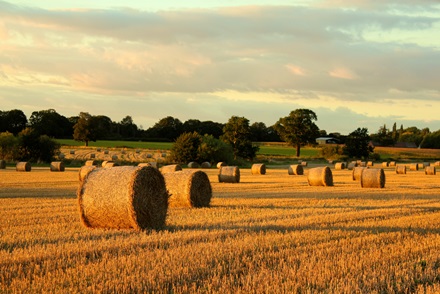Spotlight on: Agroecology

The Biologist Vol 60(5) p38-39
Agroecology is the study of farm ecosystems. Agroecologists use the principles of ecology to help design and manage sustainable agricultural systems. Because the field looks at entire ecosystems, land use and complex farming processes, agroecologists often have to consider the interaction of economic, social, cultural and political factors in their work.
Why is it important?
Some projections predict that by 2050 the world will have to double food production to ensure the population has enough affordable food. New approaches are required to provide for the agricultural needs of present and future generations without depleting natural resources or degrading the environment. Agroecology aims to sustain or increase the productivity of agricultural systems while minimising the negative environmental and socioeconomic impact of modern farming methods.
What careers are available?
Agroecologists work in a variety of careers, including crop and farm management, the agribusiness and agri-tech sectors, and for various environmental, farming or regulatory agencies. Academic research posts are wide ranging, and cover many things, including the optimisation of yields of various food or biofuel crops; the reduction of the effect of farming on climate change; the population dynamics of crop pests and other farm flora and fauna; the study of pollinators in the farmed environment; soil microbiology; and, most hotly contested, the genetic modification of organisms used in agriculture.
How do I get into agroecology?
Most agroecologists will have studied a biology or ecology degree, many going on to specialise in crop, food or plant sciences, zoology or entomology. Rothamsted and Coventry University (see right) are the UK's main centres for agroecology research in the UK. Many charities and American colleges run agroecology courses to help improve conditions in farming communities around the world.
Where can I find more information?
The British Ecological Society offers research grants, resources, publications and membership for aspiring ecologists.
Rothamsted Research is the longest running agricultural research facility in the world. It has an archive of resources for students and scientists, and runs a number of public meetings and national sampling projects every year. The Centre for Agroecology and Food Security is a joint initiative between Coventry University and Garden Organic, an organic growing charity.
Web resources
www.britishecologicalsociety.org
www.rothamsted.ac.uk
www.coventry.ac.uk/agroecology-and-food-security
 At a glance
At a glance
Name: Hayley Jones
Profession: PhD student
Qualifications: BSc (Hons) in biology, University of York
Interests: Ecology, agroecology, entomology, dispersal, population dynamics, conservation
What does your research involve?
I'm looking at the dispersal ability of different species of macro moths (mainly moths with a wingspan of more than 1cm). We don't understand much about their mobility so I'm trying to quantify the dispersal ability to see if it is related to their current population changes – there are a lot of species declining in numbers and a few that are increasing.
How do you measure that?
I'm measuring it using a tethered flight mill system – we attach the moths to an arm which turns round on an axis. The moths fly round in a circle and a computer records how many revolutions they make so I can gather information about their speed, the distance they've flown and how much time they spend travelling. I'm using this data to get an idea of how good they'd be at dispersing in the wild.
So they'll happily fly round and round even though they're not going anywhere? Yes. Moths don't really require much stimulus for them to fly – whereas people tried to use flight mills with bees and found you need to give them all sorts of visual stimulus to make them fly. It's quite variable, but some fly for the whole night.
What does your research suggest is going on?
The wider study from the Rothamsted survey that found many species are declining attributed this to different things, such as climate change and habitat loss. The theory is that the moths best equipped for flying may be the ones that can move north as the climate changes, or find new habitat if theirs is destroyed. The moths with the poorest mobility are therefore also the ones in decline.
How does this relate to the agriculture industry?
We are concerned about the moths that are in decline, but at the other end of the scale those that are very strong dispersers could become pests as the climate warms. We already have some species in the UK that are pests of garden and house plants, but we need to keep an eye on them as they could become crop pests. We could also potentially have dispersal from the continent causing problems in the UK.
What does an average day involve?
I start by emptying my moth trap in the morning. I select certain species that I'm focusing on, then I take them to the lab where they are chilled for a couple of hours so they are calm when they are attached to the pin. Then I feed them, connect them to the flight mill and leave them overnight.
When I come in the next day, I take those moths off the flight mill and repeat the process.
How did you get into this line of research?
When I was at university, I was at a naturalist and bird watchers' society and we had a lecturer who was our unofficial patron. He'd run a moth trap every night for the past 30 years and he used to invite us to see him empty it. So I'd encountered moths but didn't think I'd want to study them as a career. But when I was looking at PhD projects, this one leapt out at me, and I thought not many people study moths, and that makes it more interesting.
It's a very satisfying thing to work on – the information could be used to focus conservation priorities on certain species of moths. It's a group that is very important and an indicator species.


